Wondering how many ounces are in a gallon? Maybe you aren’t sure about the volume of the liquid you should be drinking each day to keep your body (and mind) in tip-top shape. (There are 128oz in 1 gallon of liquid.) To dive deeper, grab a glass of water, and let’s talk gallon measurements, hydration, and more!
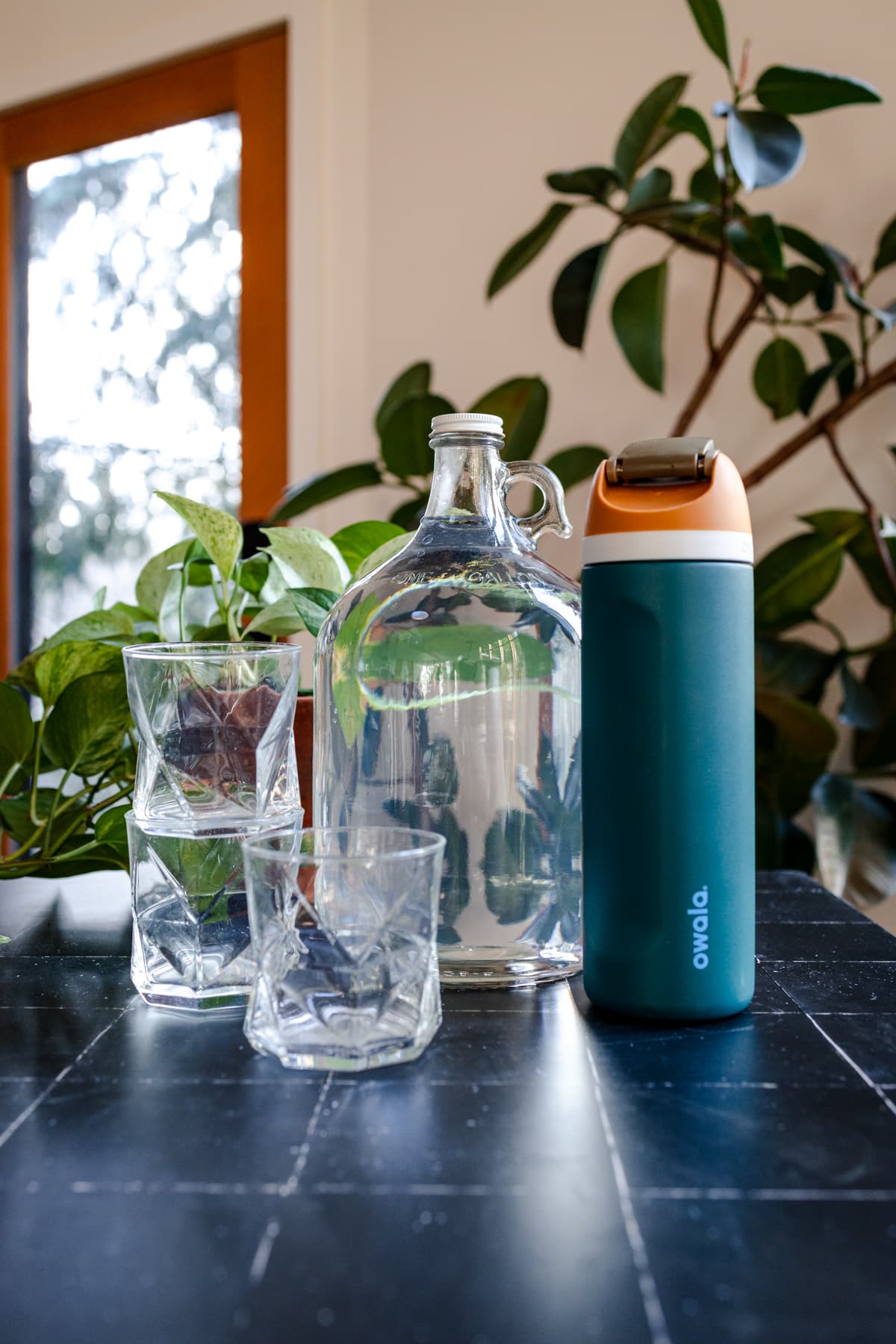
Chances are that you’ve found yourself grumpily looking at the many different units of measurement time and time again, wondering why all conversions should be so damn confusing! What’s the difference between the British imperial system and the oh-too-familiar metric system? What’s the number of ounces in a gallon? And most importantly, what are all the different ways to measure gallons around the world?
Don’t fret! Figuring out the oz-to-gallon conversions is not as hard as you think! No matter if you are a self-proclaimed home chef, ready to master the liquid measurements for your future healthy recipes, or want to keep your daily water consumption in check, we put together the easiest conversion calculator for you ahead.
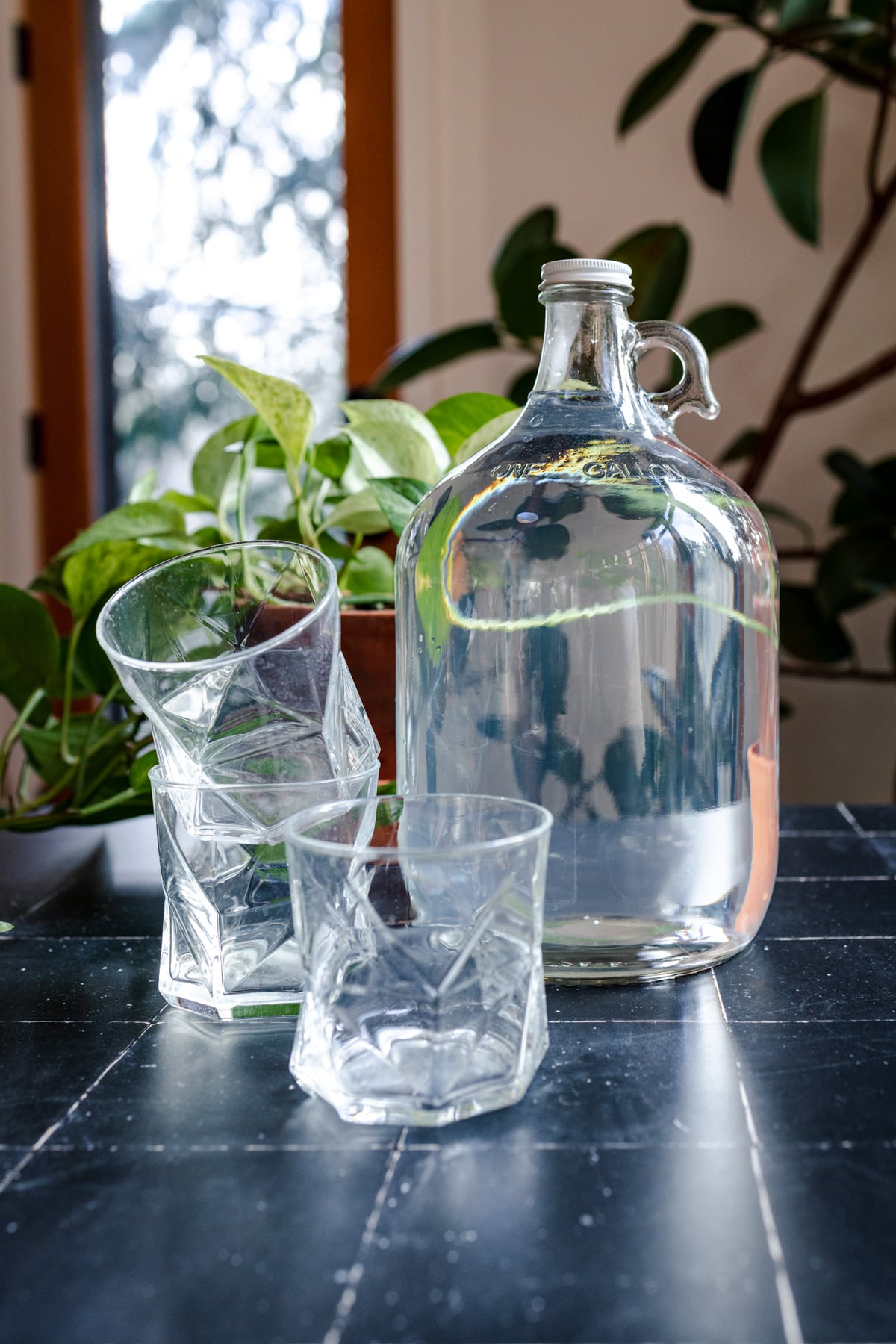
How Many Ounces are in a Gallon of Water?
Ounces, or “uncia,” if we want to quote the Romans, is a unit of weight (dry ounce) or a unit of volume (fluid ounce). Fun fact: the word means “ a twelfth part, an ounce, or an inch.” The Roman inch was equal to 1⁄12 of a Roman foot, which was standardized under Agrippa to about 0.97 inches or 24.6 millimeters.
Surprisingly, the term managed to survive as the Byzantine liquid ounce — which is also known by the gree work οὐγγία, oungía). So to put it simply, a gallon of water is 128 ounces. This basically means that in one Imperial gallon, there are 153.722 fluid ounces of liquid. For reference, the standard size of a water bottle is 16.9 fluid ounces – which equals 0.132 gallons.
However, you probably already know that The number of ounces in a gallon varies depending on the different countries’ units of measurement – but more on that later.
How Many Oz In A Gal Conversion Chart
| Ounces | Gallons |
|---|---|
| 2 fl oz | 0.015625 gal |
| 4 fl oz | 0.03125 gal |
| 8 fl oz | 0.0625 gal |
| 16 fl oz | 0.125 gal |
| 32 fl oz | 0.25 gal |
| 64 fl oz | .5 gal |
| 96 fl oz | .75 gal |
| 128 fl oz | 1 gal |
| 192 fl oz | 1.5 gal |
| 256 fl oz | 2 gal |
| 384 fl oz | 3 gal |
| 512 fl oz | 4 gal |
| 640 fl oz | 5 gal |
| 1280 fl oz | 10 gal |
Are fluid ounces and ounces by weight the same?
No, an ounce of liquid is basically the amount of water weighing one ounce. That’s exactly why fluid ounces (fl.oz.) are used to measure liquids, whereas an ounce oz is solely used for dry measurements. Also, US fluid ounces of water always weigh a bit more than dry ounces.
Typically, 1 fl-oz = 1.04 oz wt. However, the exact weight depends on the type of liquid we want to measure. Some fluids, like milk, have a heavier mass, and thus, it’s important also to take this conversion factor into consideration. Usually, dry oz is used to measure ingredients: flour, salt, pepper, sugar, chocolate, and more. liquid ounces, on the other hand, are ideal for measuring water, milk, oil, etc. Of course, exactly like liquid oz versus dry oz, the same applies to dry gallons and US liquid gallons.
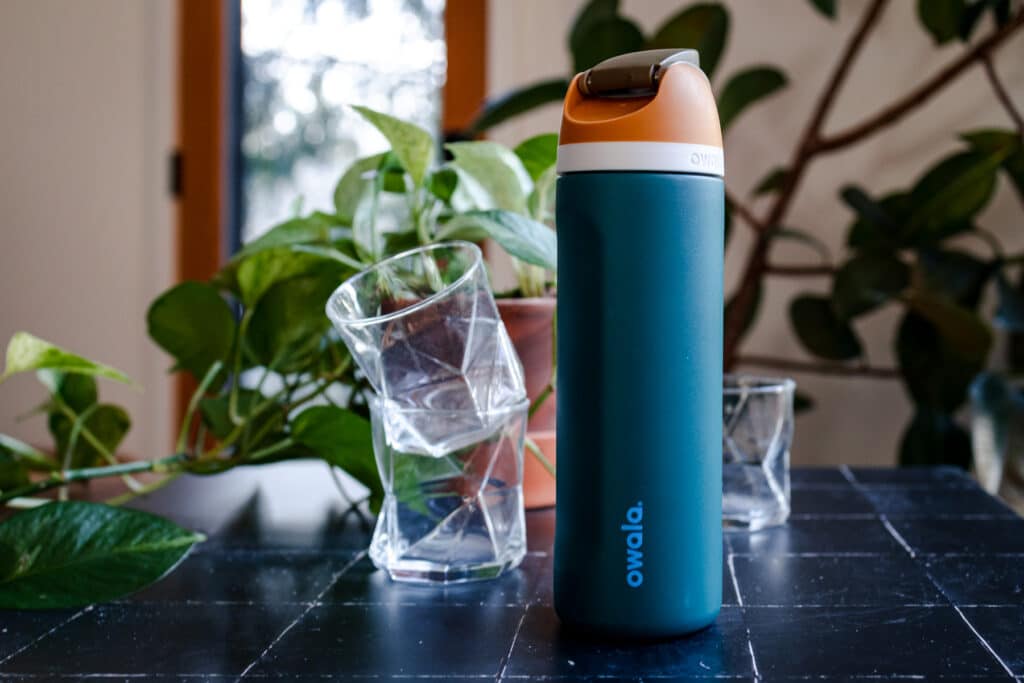
Are US and UK gallons the same?
Now that you know how many ounces are in a gallon according to the US system, let’s go over the different measuring systems around the world.
The Imperial System (otherwise known as the “British Imperial System” ) was first defined in the British Weights and Measures Act of 1824. A few years later, in 1832, the United States adopted and renamed it the “US system”. The only difference between the British imperial system and the U.S. system is the volume of measurements. One gallon in the UK imperial system is about 1.2 US gallons. Here’s something you may not know; the U.S., Myanmar, and Liberia are the only countries that still use the imperial system day to day. The rest of the world has adopted the metric system.
The metric system, first introduced in France in the 1790s, is based on the meter, liter, and gram. It quickly became the most used measurement system in the world.
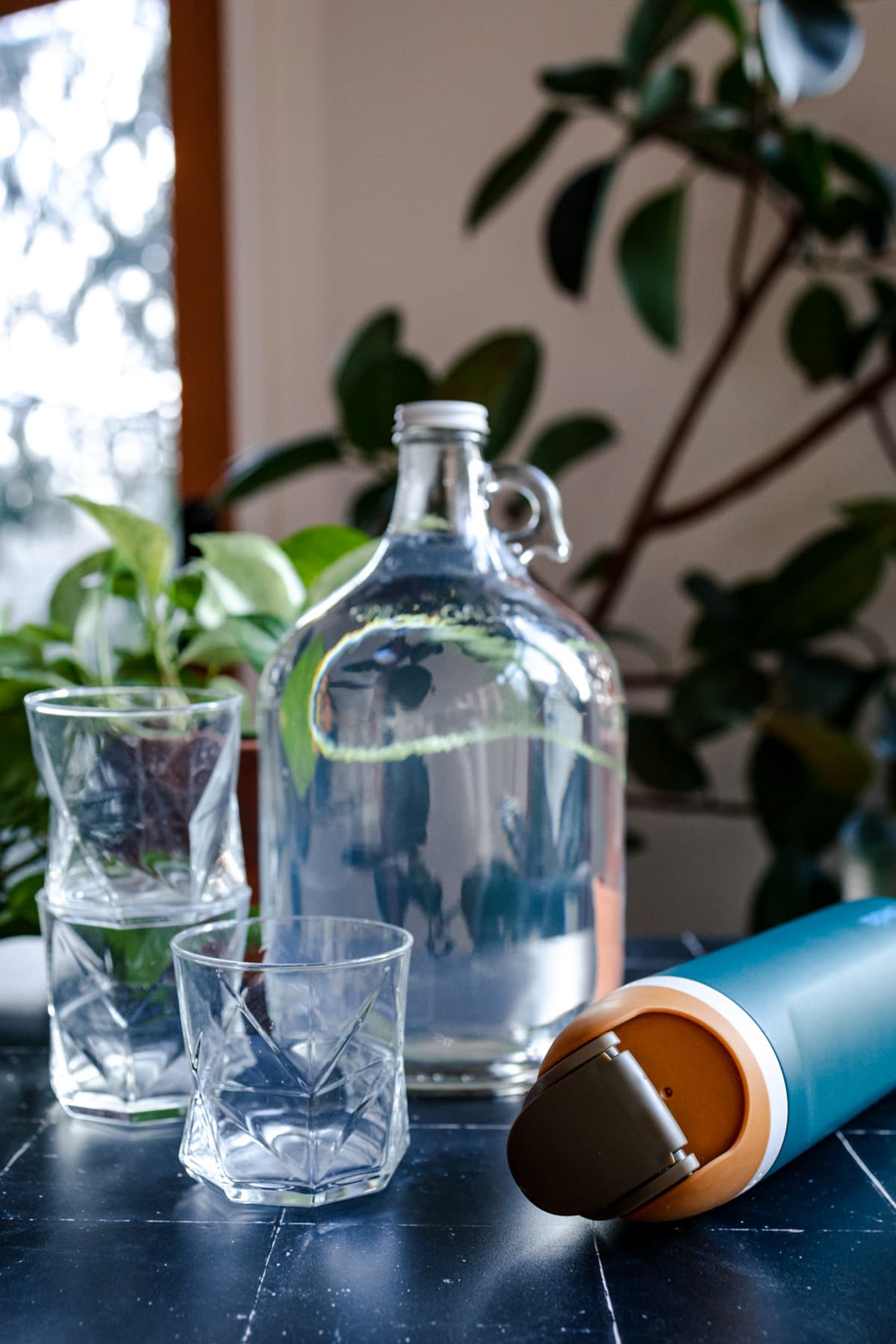
Why You Need To Know How Many Oz Are in a Gallon
US fluid gallons, US liquid gallons — why the heck do I need to know all of that? Well, the answer is pretty simple. Having a good understanding of all the different imperial systems of measurement can help you in many aspects of your day-to-day life. You’ll be surprised by how often imperial gallon conversions come in handy.
Recipes Often Use Ounces
How many times have you found yourself drooling over a mouthwatering lunch recipe while browsing your favorite food blogs? The only issue is that most nutrition fanatics use fluid ounces and dry ouches to share their ingredients list. When it comes to baking, in particular, measuring ingredients by weight is more accurate and a better way of getting more equal measurements. The same goes for cooking and fluid punches. For example, this vegan potato leek soup recipe requires one 13.6-ounce can of coconut milk to make the soup extra creamy. So, instead of constantly going online to remind yourself of how many oz in 1 gallon, why not try to memorize this easy conversion ratio?
Also, if you are an ounces-to-gallon conversion expert, you can easily scale your recipes! Is there something more frustrating than googling the answer frantically at the last minute just before you start cooking? Ugh.
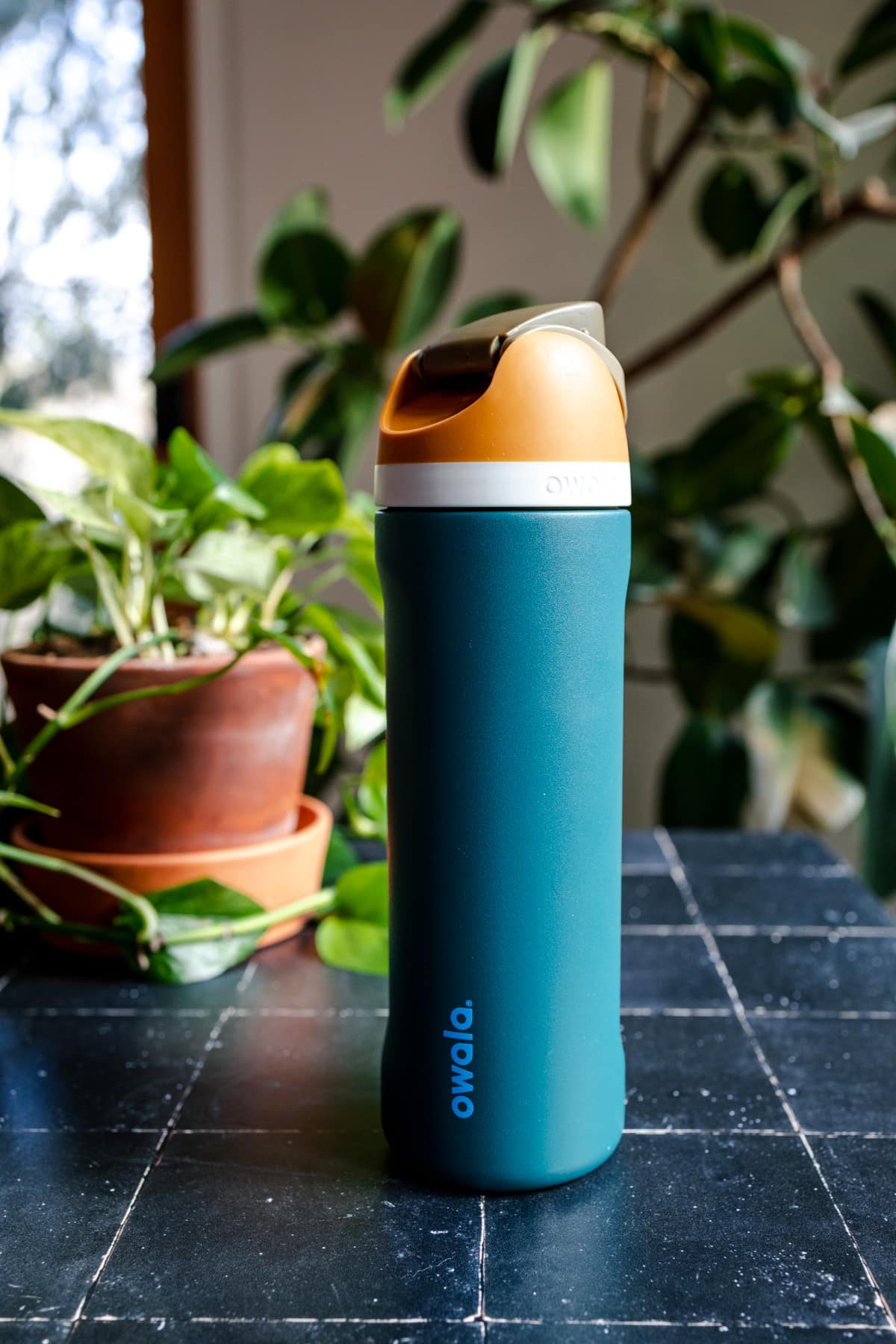
Hydration
Another occasion you may wish to know how many ounces of water in 1 gallon is when you are calculating how much water to drink daily. Especially if you are the best at staying hydrated unless water reminders and water tracking apps are involved, this easy conversion can help you embrace some much-needed lifestyle changes and stick to this year’s H2O resolutions.
In reality, your daily water consumption can help flush out waste from your body, regulate body temperature, and maintain healthy brain function. Experts confirm drinking water before, during, and after a meal will help your body break down the food you eat more easily. Research has shown that water speeds up your metabolism. On top of that, water can improve your strength, power, and endurance. However, depending on our sex, lifestyle, and activity levels, our bodies have very specific needs. It’s no wonder why water makes up about 50% to 70% of your body weight.
Are you interested in reading more about ounces in a quart? Check out this blog post, How Many Ounces Are In A Quart.
How Many Ounces Of Water Do Males Need Per Day?
An adequate daily water intake for biologically male individuals per day is about 125oz (almost a U.S. gallon) or 15.5 cups of water (3.7 liters). This is mostly because males generally have a higher energy expenditure and less body fat than women. In fact, the proportion of body weight made up of water between males and females is also different. To put this into perspective, 60% of male body weight is water, whereas women’s bodies have about 5% less water weight.
How Many Ounces Of Water Do Women Need Per Day?
Unlike males, females require less water intake. The ideal fluid intake for women is about 91 oz per day. This is the same as 11.5 cups, 2.7 liters, or 0.71 gallons of water per day. However, if you live at a higher elevation or if you are pregnant, you need more fluids.
How Many Ounces Of Water Do Pregnant Women Need?
Pregnancy can affect multiple aspects of our day-to-day life, and water intake is definitely one of them. During pregnancy, you should drink more than the normally recommended 91 ounces of water each day.
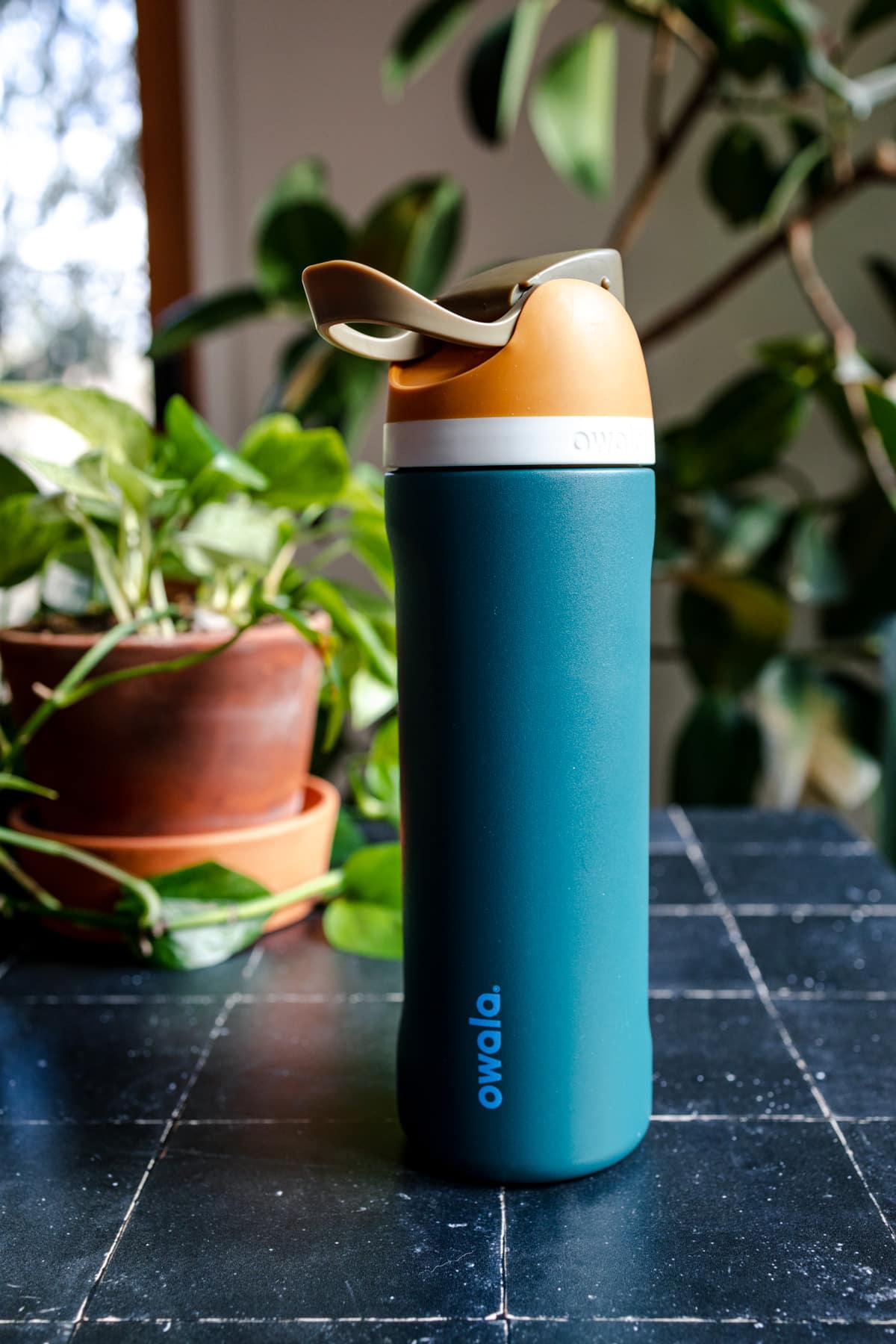
How Much Water Should You Drink At Higher Elevations?
At high elevations, you should consume 1.5 to 2x the amount of fluids you would normally drink. (Remember that about 20% of your fluid intake comes from your food.)
High altitudes cause your body to lose water twice as fast as at sea level. This is also important when flying. The Aerospace Medical Association (AsMA) recommends drinking 8 ounces of water per hour while on a plane.
How Many Ounces Of Water Should We Drink During Exercise
So, how much water is enough water when working out? It’s no secret that we tend to lose more fluids and electrolytes through sweat. That’s why experts recommend 7 to 10 ounces of fluid every 10 to 20 minutes during exercise —or, to put it simply, 1 cup of water during your workout.
Cyclists’ water needs tend to range between 1.2 to 2 Liters of fluids (40.5-67.6 ounces) per hour of exercise. However, the number of ounces of water also depends on the weather conditions, such as excessive heat and humidity.
Also, adults usually need 2 cups of water per hour of hiking.
Free Download Ounces To Gallons Conversion Chart
Click here to download and print!
Tips For Meeting Your Daily Water Needs
It can be easy to forget to keep hydrating. Here are some easy ways to increase your water intake to meet your daily goals.
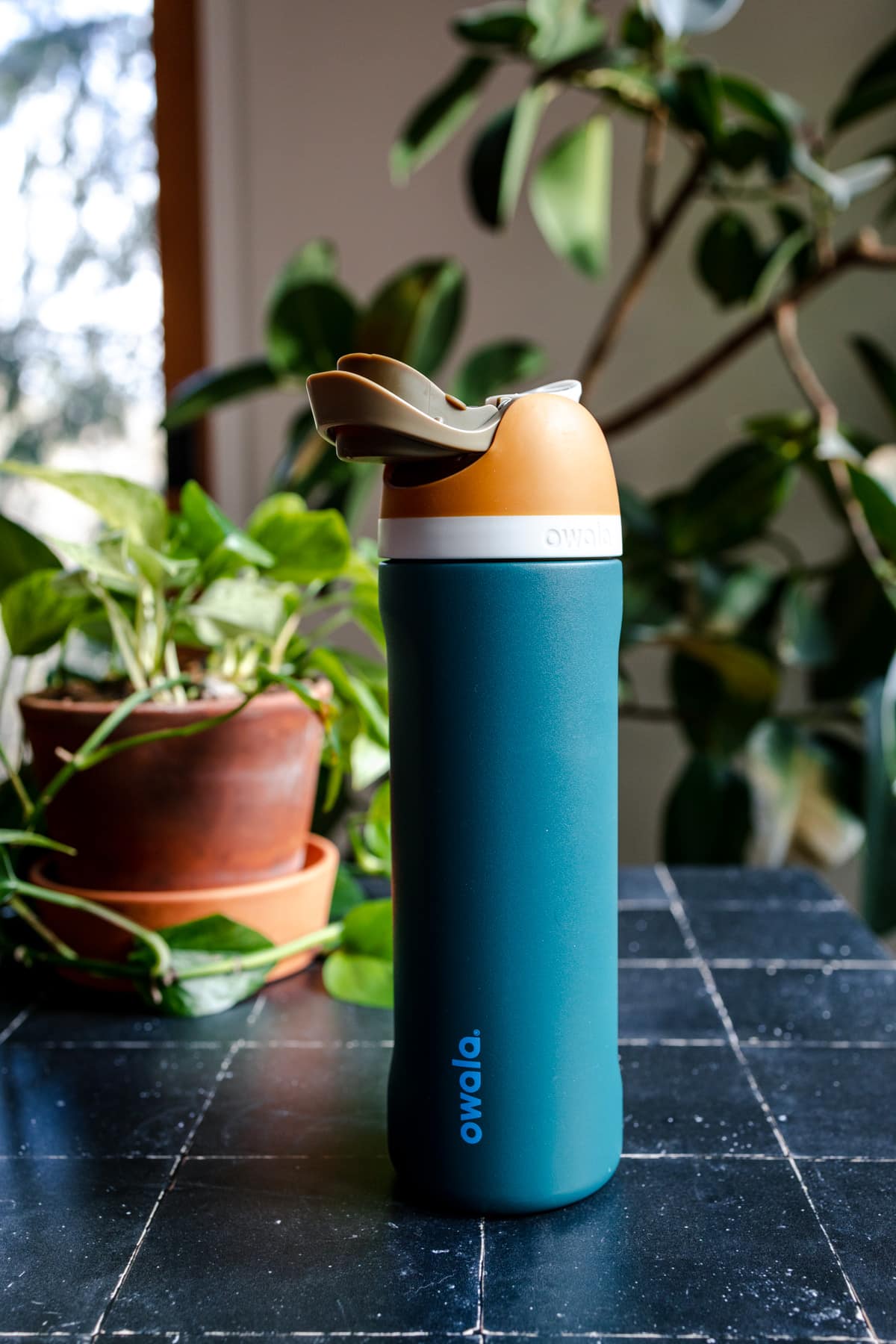
Use A Water Bottle
Using a water bottle makes drinking enough water easier to accomplish. If you use a water bottle, then you know exactly how many ounces of water you have consumed and how many more you need to meet your needs.
For example, I like using a 24oz Owala FreeSip water bottle. If I drink two water bottles by lunch and another two by dinner, then I’m set for the day. If I’ve only finished one by lunch, I know I need to kick myself into gear to reach my goals.
Personalize Your Water Bottle
Adorn your water bottle with stickers of your favorite place and things. It draws your attention and can infuse your hydration journey with happy memories!
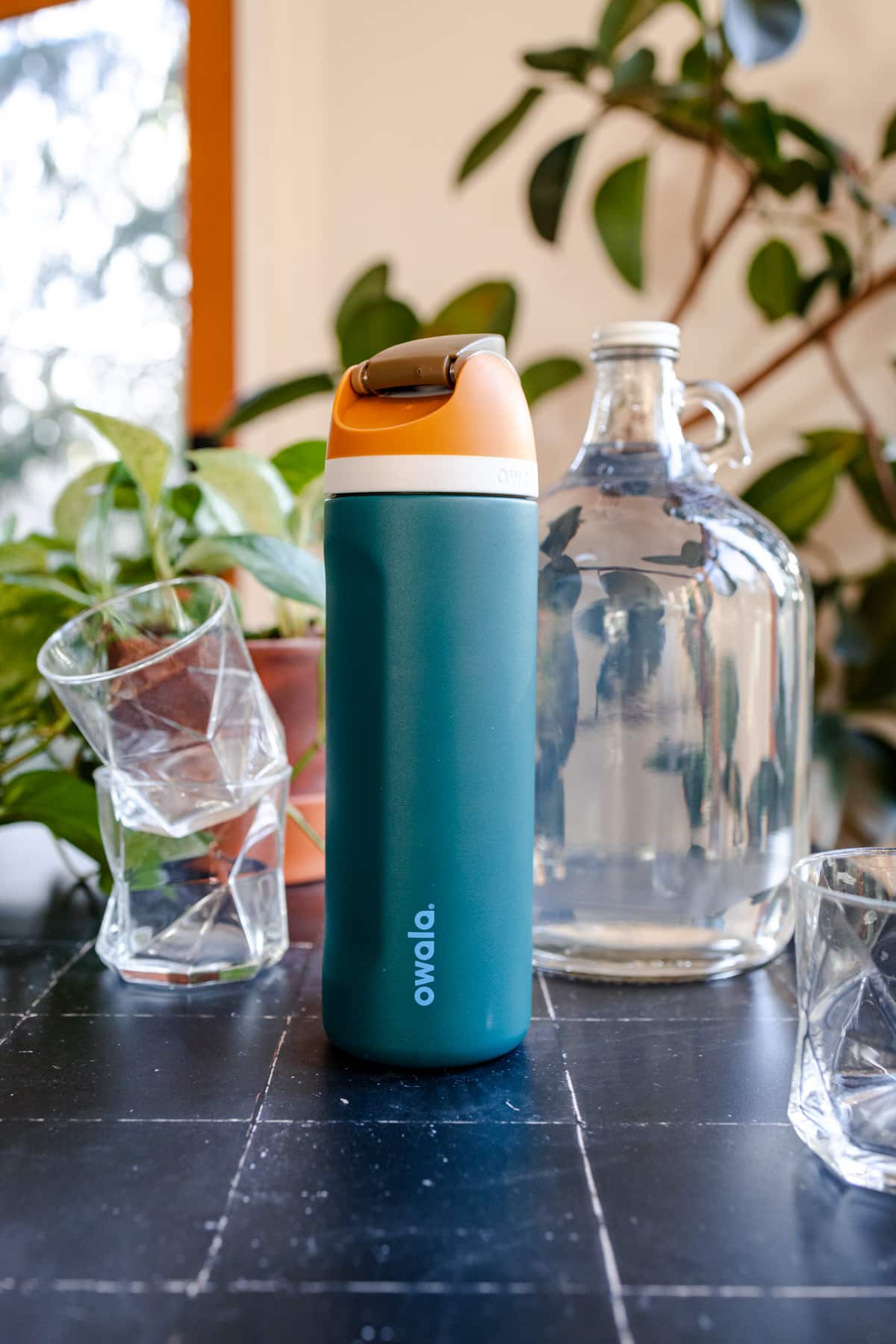
Drink Water When You Wake Up
I like to keep my water bottle next to my bed so as soon as I wake up, I can start rehydrating. There’s nothing better than starting your day off right!
Use A Water Drinking App
Using an app to track your drinking can really help. A good free water tracking app is Daily Water Tacker Reminder. For a paid option, Water Minder is great!
Drink Infused Water
Drinking infused water can really spice things up and keep your hydration journey interesting. It makes it so you’re not drinking the same old flavor every single day.
Try Grapefruit-Rosemary-Infused Water, Cucumber Lemon Water, Pomegranate Water, or Strawberry Lemon Infused Water.
Add A Flavor Booster Or Electrolyte Packet
There are a host of different electrolyte packets and flavor boosters you could add to your water to make it more interesting to your taste buds. I would strongly recommend using one that has little to no added sugar.
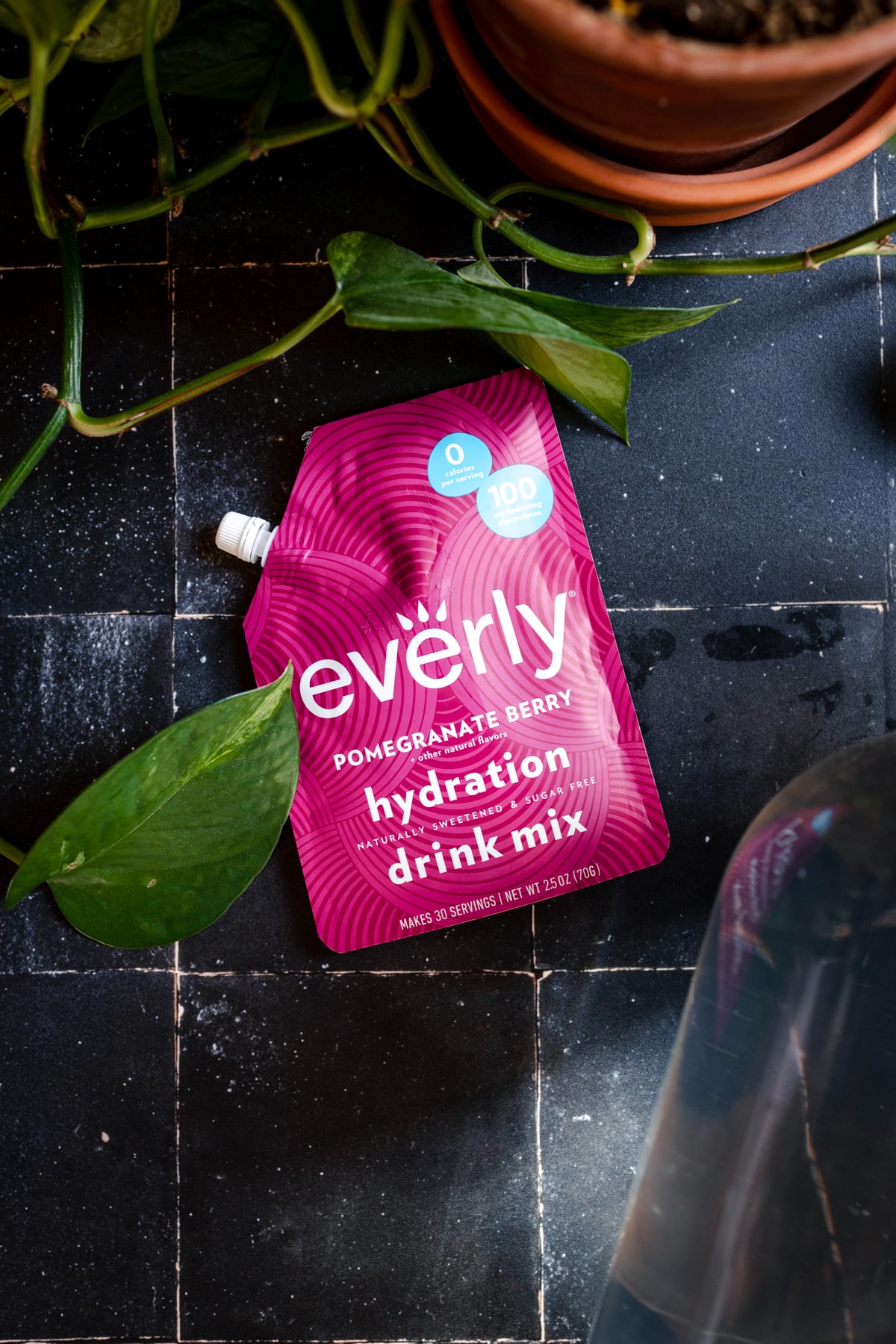
FAQ
Yes, 128 imperial fluid ounces are equal to 1 gallon. In the Imperial system, however, the gallon conversion is a bit different, which means that there are 160 ounces to a gallon. The same applies to imperial quarts. 1 US liquid gallon equals 3.3307 imperial liquid quarts. But, in the imperial system, 1 quart equals 0.25 gallons.
Nope! You will need 128oz for one gallon. 64oz is the equivalent of half a gallon.
When it comes to the US unit of measurement, there are 64 fluid ounces in half a US gallon of liquid. 64 fluid oz equals 1.8 litters (or 2 quartz which is about 7 US “legal” cups, if you want t use a 240 ml plastic container of water as an example).
We already know that one gallon equals 128 oz in the US system of units, which means that 8 bottles of 16 oz are required to make one gallon.
Time to get our thinking caps on to calculate the exact liquid volume! A gallon contains 128 ounces. This means that every gallon equals 16 eight-ounce glasses of water.
While everything depends on your sex and levels of daily activity. The recommended water intake for men is about 15.5 cups (3.7 liters of water) of fluids a day.
Women typically require less water, so it would be best to drink about 11.5 cups (2.7 liters) of fluids daily. This equals 125 and 91 ounces of liquid, respectively – or 0.9 and 0.7 gallons based on the imperial gallon conversion.
Sure! The recommended water intake for men and women is a bit lower than 1 gallon per day, so rest assured that your body will probably thank you for hydrating it with one gallon of water (or more). Drinking this amount each day can help regulate your energy levels and improve your skin, among other benefits.
However, it’s important to point out that there is such a thing as “too much water.” Drinking more than 3 liters (100 ounces) per day can cause hyponatremia or water intoxication — meaning that your kidneys won’t be able to get rid of the excess water.
Final Words
Ultimately, how many ounces are there in a gallon depends upon which system you are using to calculate the ounces of liquid. A gallon holds 128 ounces. But if you are using the imperial gallon conversion as a guide, a gallon of water equals 128 ounces. Granted, at first, it may sound a bit confusing, especially if you swap between US and imperial measurements, but as soon as you get on top of the conversion ratio, the process will be a breeze.
Knowing the ins and outs of unit measurements won’t only help you create the most mouthwatering recipes. Ounces to gallons conversions can also reinforce your H2O pledge this year and beyond. Bonus tip: if you are having trouble drinking the recommended 125 (men) and 91(women) ounces of liquid per day, you can always infuse your drink with delicious fruits. Here is my favorite grapefruit-infused water recipe — thank me later!
More Measurement Articles
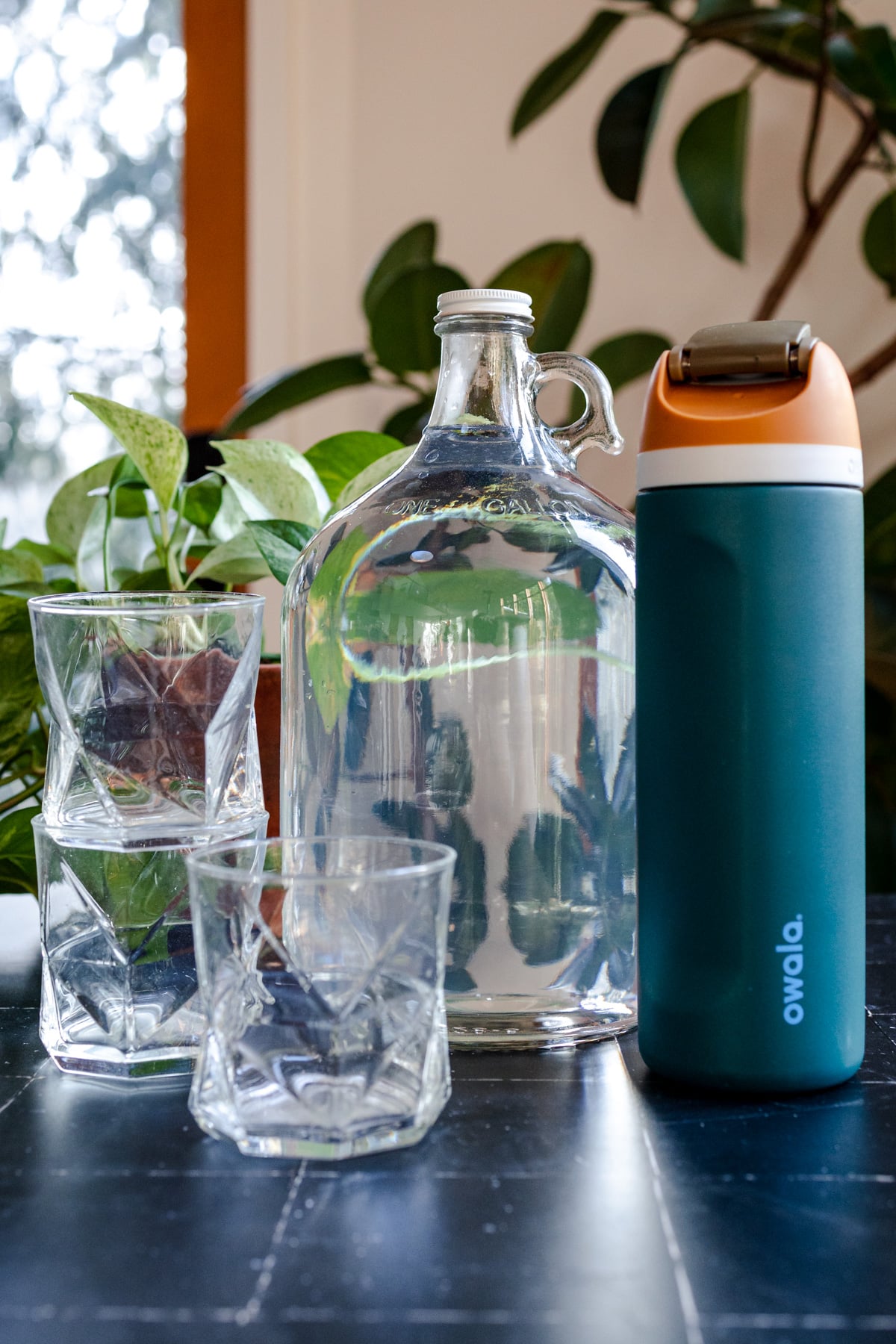

I definitely need to be drinking more water apparently.
Happens to the best of us!
Great article. I loved the emphasis on hydration!
Wonderful! Happy you like it.